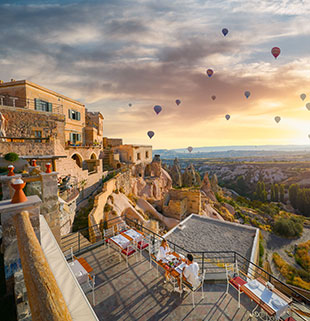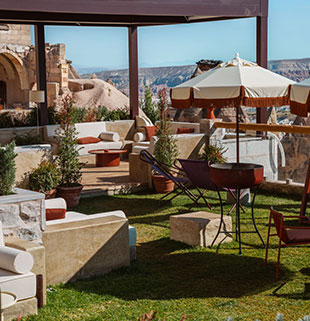Today Cappadocia is a tourist hotspot in the heart of Central Turkey but this has not always been the case. The human history of Cappadocia stretches back thousands of years and spans many empires.
When you visit this geological wonderland please consider that you are walking on ground ruled by the Hittites, Eastern Mushki, Persians, Macedonians, Romans/Byzantines, Seljuks, Karamanids, Ottomans, and the Republic of Turkey.
The boundaries of the area of Cappadocia have changed through that time. At one point it extended north all the way to the Black Sea and south to the Taurus Mountains, but today it is not even an official region in Turkey. The historical name of the area has been kept for tourist reasons and what people visit today is only 150 miles by 250 miles touching five Turkish provinces (Kayseri, Nevsehir, Kirsehir, Aksaray, and Nigde).
The current name comes from an adapted form of Katpatuka which it was called by the Persians. With the fall of the Hittites around the 12th century B.C. the Eastern Mushki ruled the area. Then King Croesus is known for whom has a fabulous wealth and ill-fated oracles and comes on the scene but is quickly defeated by the Persians in the 6th century B.C.
The Persians ruled the region from a distance, i.e. the local leaders most likely had their way as long as they did not get out of hand, until Alexander the Great defeated them. At that point somehow in the chaos of Alexander’s death, Cappadocia became a kingdom. Ariarathes I was king from 331-320. His sons followed him, and Cappadocia was ruled as a kingdom until 17 A.D. when the Roman emperor decided to make it a province. The Cappadocians had had good relations with the Romans since 188 B.C. but the Emperor Tiberius changed the status in a fit of anger at the Cappadocian king.
From that point the history of Cappadocia is rather straightforward, at least from a big picture view. The Romans gave way to the Byzantines (who were actually Romans) who controlled the area until the Seljuks moved into the area after the battle of Manzikert in 1071. The Seljuks of Rum ruled for a time until they were defeated by the Mongols and the Karamanids (from Karaman southeast of Cappadocia) took over in their rivalry with the growing Ottoman dynasty. During your time in Cappadocia, you may visit a caravanserai as they are popular on many of the tours. You have the Seljuks to thank for this. Be sure to note the unique architecture they introduced to this land. With the fall of the Ottoman Empire after WWI, the Republic of Turkey was formed and that is how things currently stand.
CHRISTIANITY
But in all of this changing of empires, the most striking aspect of Cappadocia, its cave communities, has gone unmentioned. The first Christians arrived in Cappadocia shortly after the resurrection of Jesus and the birth of the Christian religion. They are mentioned in the Bible on at least 2 occasions, most clearly when the apostle Peter writes them in his first epistle.
The Cappadocian Fathers, Basil the Great, Gregory of Nazianzus, and Gregory of Nyssa, played a significant role in the development of Christian theology in the 4th century. They also established the monastic communities that would survive for hundreds of years.
ISLAM
Islam arrived with the Seljuks and was continued with the Ottomans. Both ruling groups built mosques and madrasas, many of which are still standing today.
For most of the Ottoman days there was a mix of peoples living together, but that ended with the forced people swap between Turkey and Greece in 1923-24. You may visit Mustafapasa while you are in Cappadocia and see the remnants of the Greeks who inhabited the area.
NEW CITY
One other note worth pointing out was the creation of Nevsehir, the provincial capital. This town was first famous as Nyssa, the home of Gregory mentioned above. Then it fell off the map and was just a small village until Damat Ibrahim Pasha became Grand Vezir to the sultan in 1718. He poured money into the region transforming his small village into a “new city”, thus the name Nevsehir which translates as new city. The mosque and hamam complex he built are still in use today.
And with that we have flown through 3000+ years of Cappadocia history. Hopefully this will make your time here more meaningful. As you trek through caves and valleys think of all those who have come before you and enjoy the legacy they have left to us.








